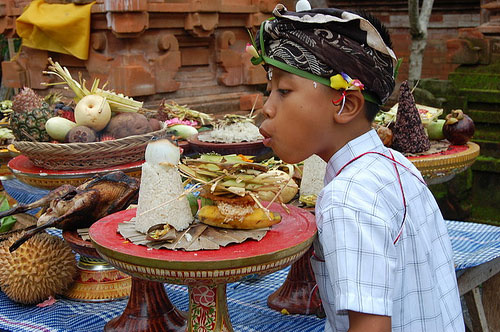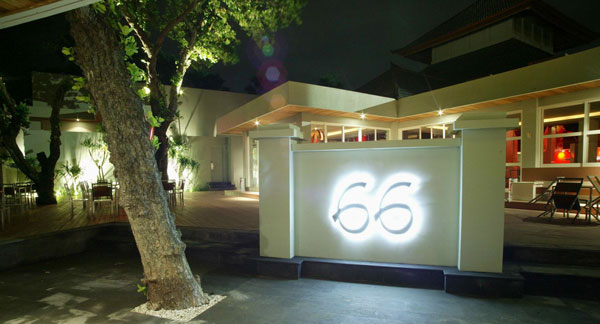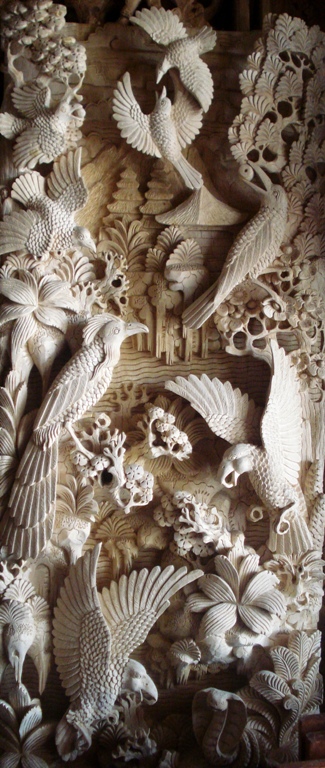Located :
Puncak Penulisan Temple located 1.745 meters above the sea level, around 3 kilometers from Kintamani village or 30 kilometers from the Bangli Regency.
Descriptions :
Based on Balinese old manuscripts, it was said that Penulisan Hill was also called Tunggal Hill, as its location is separated from the chains of mountains stretching from west to east, as if Bali is divided to parts, the northern and the southern part. Penulisan Temple was built around 9th century, the most popular is called as Puncak Penulisan temple, as if lies on a top of Penulisan Hill. The temple has terraces leading to it, up to 11 terraces. The terraces show the continuation of pyramid cultural aspect of megalithic age. Pucak Penulisan is part of temple complexes, where there are other temple complexes there.
Danu Temple and Taman Danu Temple are located at the third terrace, and Ratu Penyarikan Temple lies at the fourth terrace, at the western part of the temple. The fourth complex is Ratu Daha Tua temple located at the western part in the sixteenth terrace. The last or fifth complex is Panarajon Temple sitting on the eastern part of the hill’s peak. This complex is the highest compared to the other four complexes. Inside the temple complex the visitors could see stone-statues are believed to have come from old Bali era as the heritage of megalithic culture.
The History of the Pucak Penulisan Temple :
The temple complex of Penulisan is a complex of untied temples, built in Bronze Age that started around 300BC, continuing into the first millennium A>D. (the tenth century), then this place belonged to Pejeng-Bedulu Kingdom till the conquest of Majapahit Kingdom. The king made written decrees on bronze-plates that make scholars able to know the history of the Kingdom. Many writings contain Hindu and Buddha teaching that is transformed into basic rules. In the yard of the temple complex, there are some halls, which are covered by statues as the portraits of Balinese Kings, queens, and their followers.
Based on archeological data, the temple’s history has been arranged by experts from some inscriptions dating from the eleventh till fifteenth century. Inscription Penulisan 1: dated 1011.A.D. (Balinese Caka Year 933), the King was Mpu Bga Anatah. Inscription from Bukit Indrakila Temple (close to Kintamani village), dated 1016 A>D (Caka 938). T tells that the people of Parcanigayan (the origin where the name of Caningan Village, near Dausa Village in Kintamani. came from) asked their ruler, Anak Wungsu, to attend a celebration going to be held by his wife, Bhatari Mandul.
The demand was granted. Inscription Penulisan V, dated 1332 A>D. (Caka 1254), it reads…t (asu), Ra Ratna Bhumi or Raja Sri Asta Sura Ratna Bhumi or Raja Sri Asta Sura Ratna Bhumi Banten. Raja Sri Asta SuraRatna Bhumi banten is the name of the last Balinese king, who ruled Bali when majapahit expedition led by Gajah mada arrived at Bali (1343). Gajah mada was a famous 14th century general of Majapahit who greatly desired to unite the Indonesian archipelago into one, including Bali. By the Inscription of Penulisan temple, the conclusion derived is that in 1016 A.D, the place was the place for the late wife of Anak Agung Wungsu to pay homage and thanks to the Almighty God.
It continued to serve as the “mountain sanctuary” for Pejeng – Bedulu kingdom from the 10th century until Majaphait’s conquest in 1343, where then, it was only Besakih temple, which served as “mountain sanctuary” for Gelgel Dynasty of Klungkung (15th -17th century).
How to get to Pucak Penulisan Temple :
1. 20 minutes from Kintamani
2. 60 minutes from Bangli
3. 2 hours from Denpasar
What you can see around Pucak Penulisan Temple :
1. Volcanoes and Lake Batur are the main attraction for visitors. Penelokan village provides spectacular views of this crater lake and Mount Batur, set in a vast volcanic caldera. Photo opportunities abound, but try to be there as early in the morning as you can manage before the cloud inevitably starts to gather.
2. Pura Ulun Danau Batur, one of the most important temples in Bali .The temple was rebuilt up on the caldera ridge in 1926 after an eruption of Mount Batur destroyed the old one down in the crater. There are a large number of shrines, but most visitors are drawn to the huge eleven roofed meru in the inner courtyard.
3. Bali Aga Village at Trunyan on the eastern shore of the lake by boat from Kedisan. the key attraction is the cemetery. Ancient customs retained by the Bali Aga here include the open burial of dead bodies in a pit covered by just some light cloth .One of the best things about a visit to Trunyan is the views of Mount Batur from the eastern shore of the lake. This provides a very different perspective from the usual view from the crater rim.
The activities around Pucak Penulisan Temple :
1.Climbing Mount Batur, a climb to the summit of Mount Batur – 1,717 metres and still an active volcano – to watch the sunrise is a great experience for more energetic travelers.






